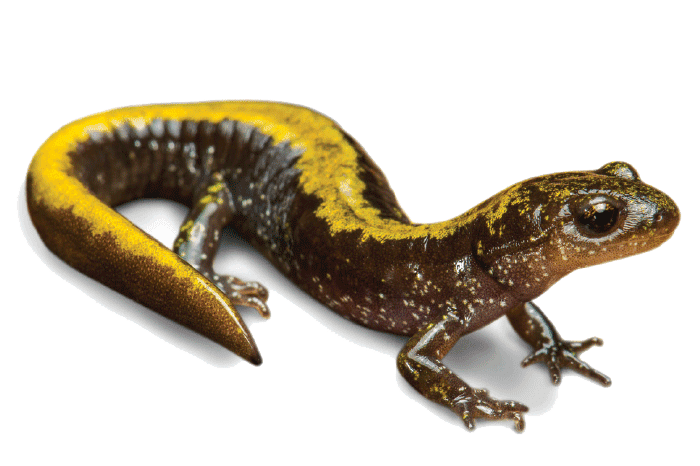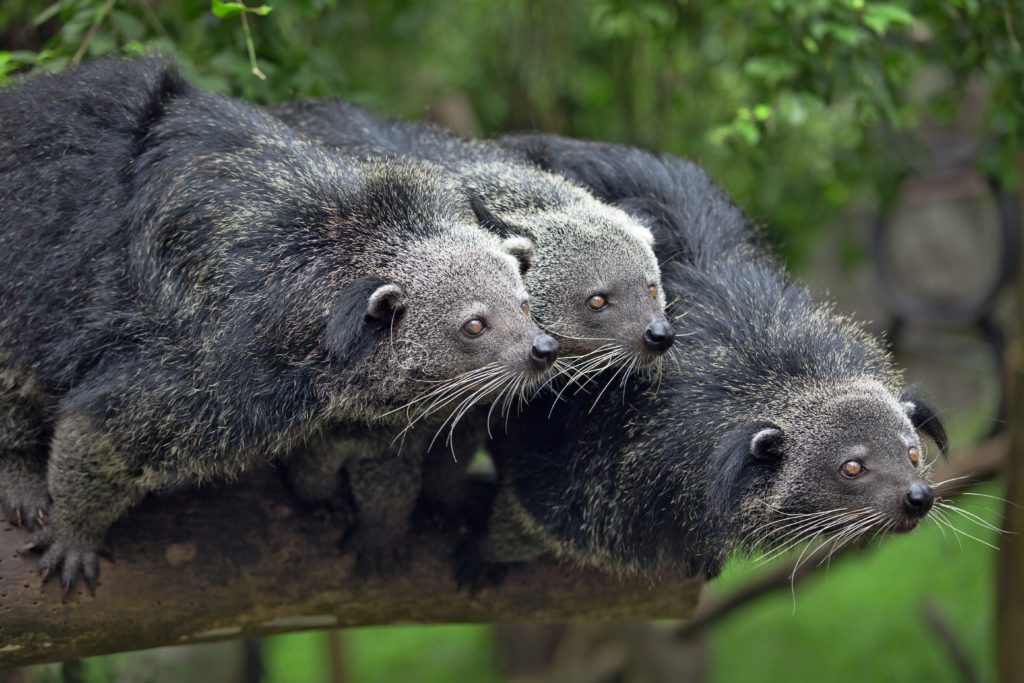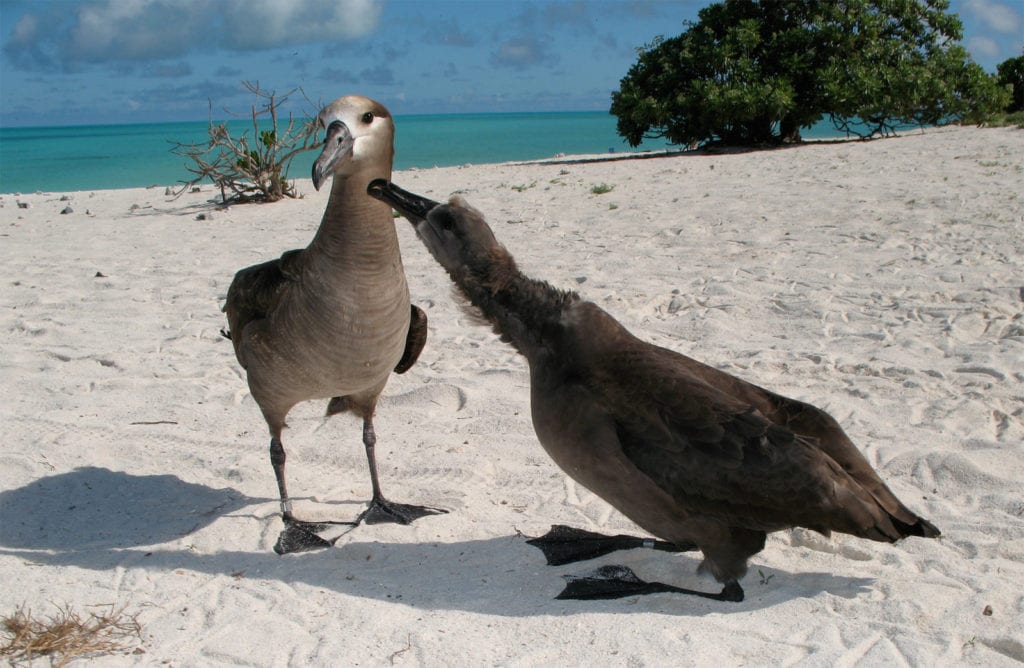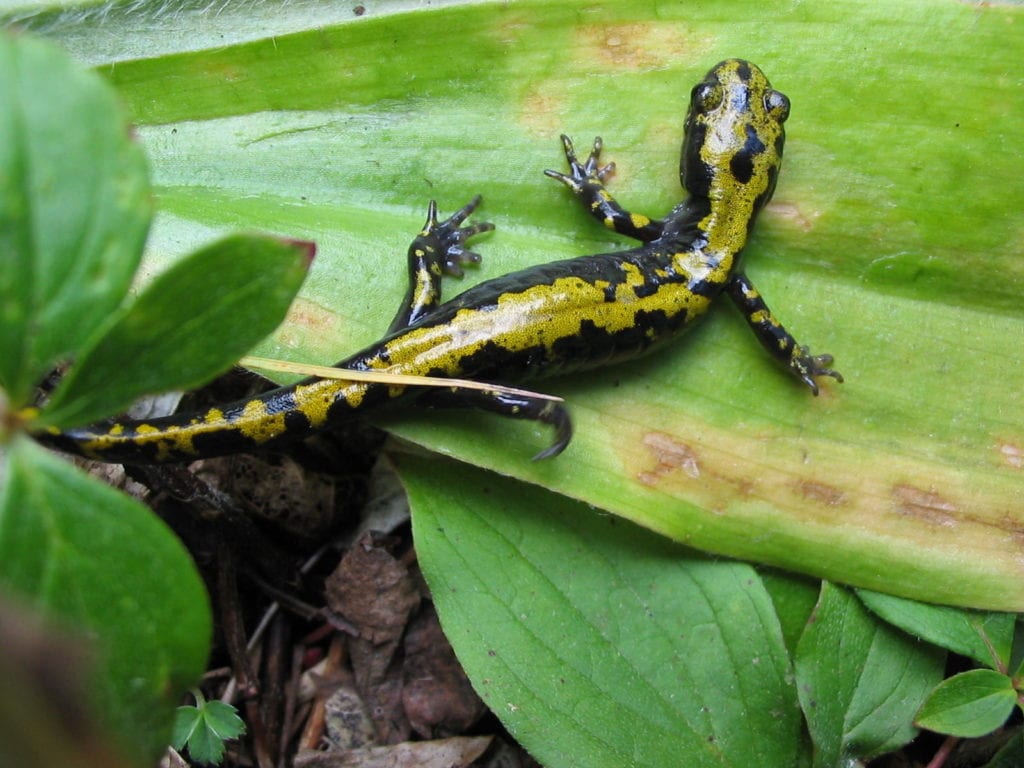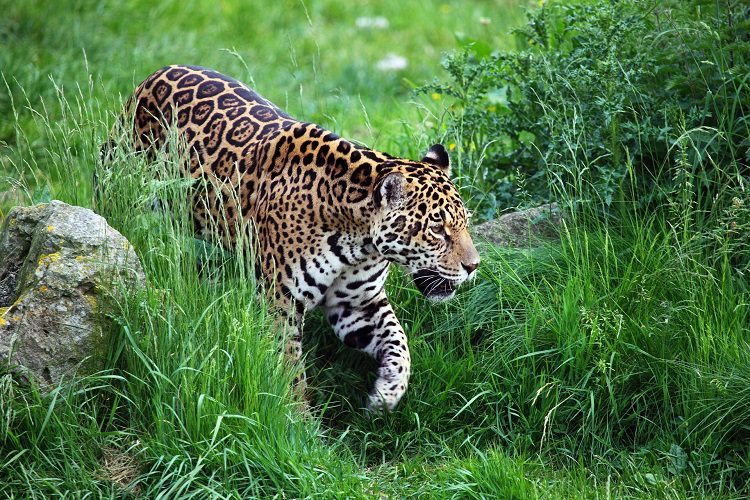The eastern long-toed salamander (Ambystoma macrodactylum krausei) occurs at the edge of its range in Alberta, Canada, where remaining populations face a number of threats. In this project, population genomics data will be collected to inform reintroductions where local extinctions have occurred due to fish stocking. Another opportunity is to study the effectiveness of under-road tunnels that have been installed to reduce salamander road mortality.
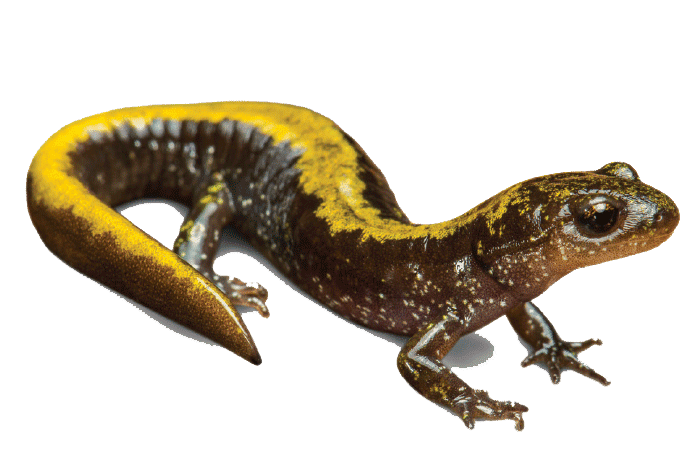
Amphibians are considered the most threatened vertebrate group, and the eastern long-toed salamander (Ambystoma macrodactylum krausei) is no exception. A. m. krausei occurs at the edge of its range in Alberta, Canada, where remaining populations face a number of threats. In this project, we collected genomic data to aid conservation efforts for a species of conservation concern, but for which there is still time to turn the tide.
We collected population genomic data to inform 3 conservation applications:
- To identify source populations for reintroductions into sites where the species was extirpated due to historical fish stocking programs.
- To estimate population connectivity and assess under-road tunnels that have been installed in part of the province to reduce salamander road mortality. These estimates of population connectivity can help assess the effectiveness of these crossings and inform the optimal placement of additional crossings to mitigate the impact of roads on gene flow.
- To estimate effective population sizes, genetic diversity, and connectivity to speak more generally to the genetic health of different A. m. krausei populations. This genomic insight provides managers with the information needed to prioritize populations for future conservation initiatives.
These data will, thus, be channeled into conservation action in a timely fashion.
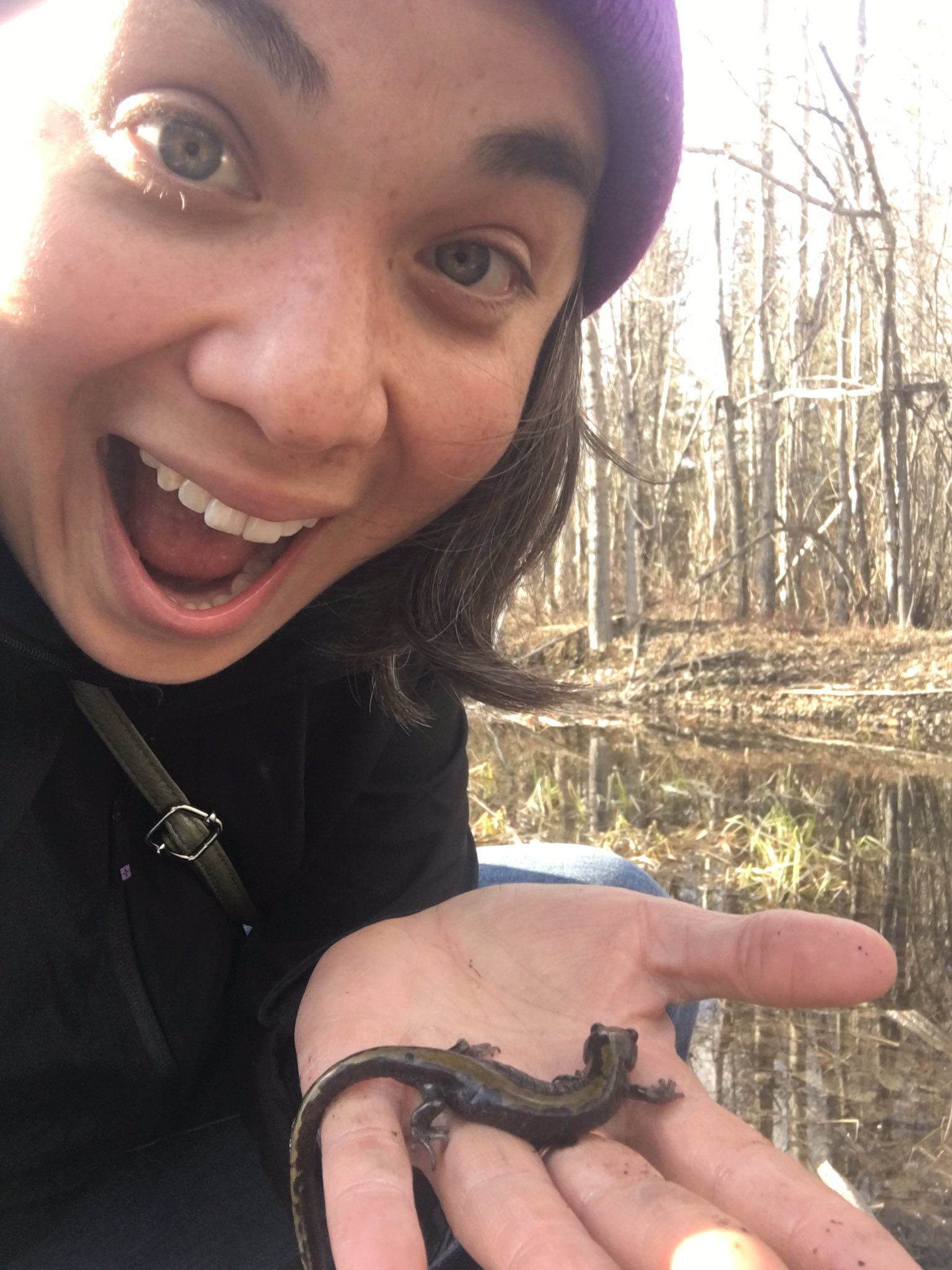
Principal Investigator: Julie Lee-Yaw, University of Ottawa
Project Findings:
Despite numerous challenges throughout their grant period – including major delays obtaining equipment during COVID-19 (2021), a building flood that required extensive clean-up and repairs to Dr. Lee-Yaw’s lab (early 2022), an institutional strike and lockout (mid-2022), and a move from the University of Lethbridge to the University of Ottawa (2022-2023) – the project team succeeded in accomplishing their objectives.
Dr. Lee-Yaw found that populations in northern parts of the Rocky Mountains in Alberta group clustered more closely with populations in British Columbia than they do with those in southwestern Alberta, greatly reducing the range of A. m. krausei in the province. Assuming that reintroductions should preserve the genetic integrity of the lineage in WLNP, their results suggest that populations from the other nearby National Parks (e.g. Banff, Jasper, and Yoho) are not genetically appropriate sources. The team also found differences among potential source sites in terms of observed and expected heterozygosity, allelic richness, and putative levels of inbreeding. In fact, low genetic diversity at many higher elevation sites within WLNP suggested recent bottlenecks. As such, Dr. Lee-Yaw is identifying suitable lower-elevation candidate sites for sourcing individuals where genetic diversity is higher.
Results from this work have been communicated to WLNP directly to inform the planned reintroductions. In addition, Dr. Lee-Yaw led a full-day workshop on the value of genomic data for conservation and wildlife management. This workshop was attended by Parks Canada staff, as well as provincial ecologists, and other conservation practitioners who work in the Rocky Mountains and Foothills regions where the salamanders are found. Results from this project were presented at that meeting as a strong example of the use of genomics to guide in situ conservation plans. Finally, Dr. Lee-Yaw integrated the long-toed salamander data as a case study in the Canada Biogenome project—an extension of the Earth Biogenome project.
Revive & Restore is proud to have funded Dr. Lee-Yaw’s Wild Genomes project, which now serves as a fantastic example of how genomic resources can be leveraged to help real-world conservation actions. We look forward to hearing about how her team’s results inform long-toed salamander reintroduction efforts!
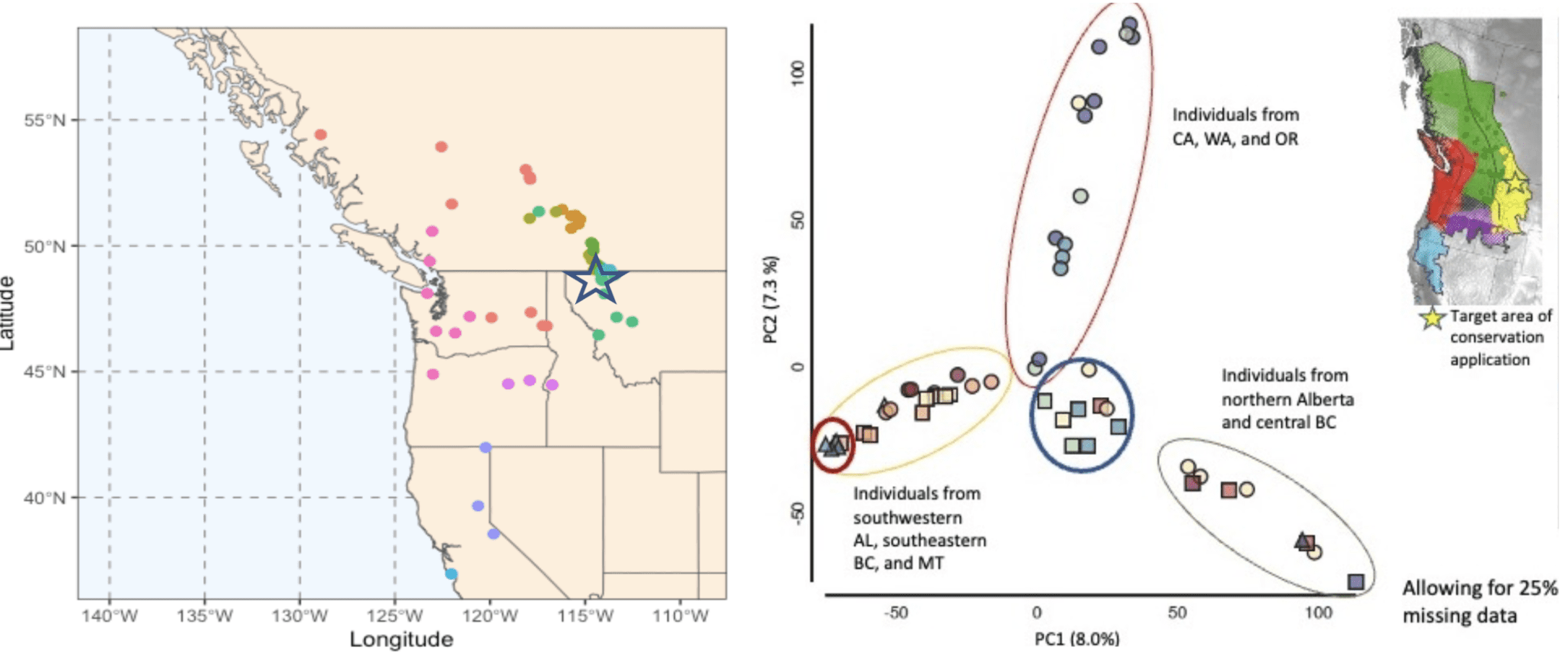
Distribution and relatedness of long-toed salamander samples. (Left) The distribution of 53 sites from which individuals were sampled across the species’ range. The star indicates the proposed area for reintroductions. (Right) Results from a preliminary principal components analysis based on ~35K SNPs characterizing genetic structure across the range of the long-toed salamander based on ddRAD loci. Individuals from the proposed reintroduction site are indicated by the thick red circle and group with other individuals from southwestern Alberta, southeastern BC, and Montana (yellow ellipse).
Special thanks to the partners that support Wild Genomes:





Keep up with Wild Genomes!
Join our mailing list for bi-annual updates from Revive & Restore, including new calls for Wild Genomes proposals.
